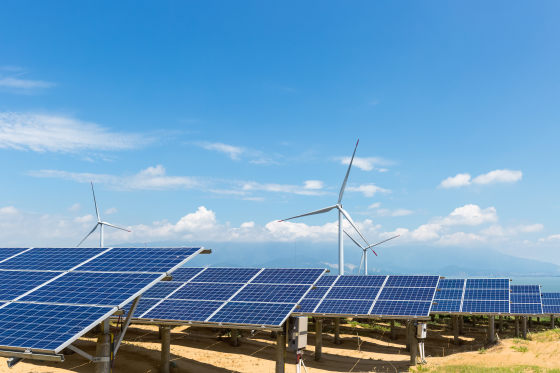'Blue hydrogen' attracting attention as clean energy may worsen the environment

In recent years, 'hydrogen power generation,' which uses hydrogen as fuel, has been attracting attention as fossil fuels emit carbon dioxide and cause climate change. In particular, what is called 'blue hydrogen' is being promoted by the US and British governments as a means of achieving climate goals, but new research shows that blue hydrogen emits 20% more greenhouse gases than coal is used. Was shown.
How green is blue hydrogen? --Howarth ---- Energy Science & Engineering --Wiley Online Library
UK plan to replace fossil gas with blue hydrogen'may backfire' | Green politics | The Guardian
https://www.theguardian.com/environment/2021/aug/12/uk-replace-fossil-gas-blue-hydrogen-backfire-emissions
Blue hydrogen – what is it, and should it replace natural gas?
https://theconversation.com/blue-hydrogen-what-is-it-and-should-it-replace-natural-gas-166053
◆ What is hydrogen fuel?
Hydrogen fuel uses 'hydrogen' as an energy source instead of fossil fuels such as coal, petroleum, and natural gas. In order to use hydrogen as an energy source, it is necessary to extract hydrogen in some way, but at the time of writing the article, 96% of the hydrogen produced in the world is produced by catalytic reforming of fossil fuels. In catalytic reforming, fossil fuels come into contact with steam and the temperature rises to about 800 degrees Celsius, resulting in the production of carbon dioxide and hydrogen. After that, carbon dioxide and hydrogen are separated, and finally carbon dioxide is released to the atmosphere, but the extracted hydrogen can be used as energy to move various things from automobile engines to boilers.
There are various types of hydrogen used in hydrogen fuel, such as gray hydrogen, brown hydrogen, black hydrogen, blue hydrogen, and green hydrogen. The difference in the 'color' of hydrogen comes from the production process, and gray hydrogen, which is commonly used in hydrogen fuel, is made from natural gas. Brown hydrogen is produced from lignite , and black hydrogen is produced from coal. All of these hydrogen fuels take the method of 'separating carbon dioxide and hydrogen'. In other words, hydrogen fuel cannot reduce carbon dioxide emissions to zero, as both methods involve carbon dioxide emissions to varying degrees.
On the other hand, green hydrogen is produced by separating water into hydrogen and oxygen using renewable energy using wind turbines and solar panels. Green hydrogen is characterized by the fact that it does not generate carbon dioxide during the production process, but the problem is that it is expensive, and it is thought that the cost will remain high until at least 2030.

◆ Blue hydrogen and its problems
Of the gray hydrogen produced by catalytic reforming of fossil fuels, the one that captures carbon dioxide produced during the production process and bury it in the ground is called 'blue hydrogen'. Tools for capturing and burying carbon dioxide are still expensive, and the problem is that the price of fossil fuels is soaring, but blue hydrogen is cheaper than green hydrogen, so the US government and the United Kingdom It is also expected by the government.
However, even with the most advanced scheme at the time of writing the article, it is not possible to capture all of the generated greenhouse gases, and some of them will be released into the atmosphere. In addition, if hydrogen fuel is used to cover the heat generated by fossil fuels, more fossil fuels will be required to generate the required blue hydrogen. With this in mind, research teams at Cornell University and Stanford University investigated 'greenhouse gas escapes' and found that they could actually produce more greenhouse gases than burning natural gas.
Specifically, although the total amount of carbon dioxide emitted in the process of producing blue hydrogen is 9 to 12% less than that of gray hydrogen, the amount of methane emitted that is missed is larger than that of gray hydrogen. It has also been announced that the greenhouse gas

Related Posts:
in Science, Posted by darkhorse_log







